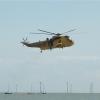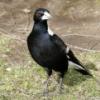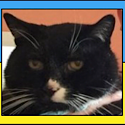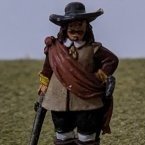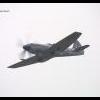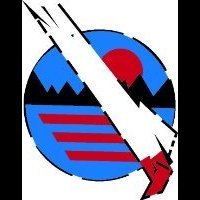Search the Community
Showing results for tags '1/48'.
-
Going to Duxford in the early eighties you could often see one or two white Dakotas parked up, with bright coloured stripes on them. Part of the Air Atlantique fleet. And G-AMPO, with her green stripes stood out in my memory. So moving on to last year I picked up a Monogram 1/48 DC-3 and thought about those wonderful looking aircraft. Decals would be a struggle. Or would they? Ray at 26 Decals offered to scale up his 1/72 set. So here is the result of my plastic kit worrying and those decals prop decals were missing in the photos above but are now present And she has working lights & motors too Thanks for looking
- 17 replies
-
- 46
-

-

-
I am proud to present my completed Zoukei Mura F-4D Phantom in 1/48. This was built in the markings of the 497 TFS “Nite Owls” This build really pushed me to the limit especially once I reached the decal stage. I had some major silvering issues which required quite a bit of work to resolve. With this build, I attempted to replicate the weathering I saw when reviewing numerous reference images as close as possible. Along with the kit, I also used the following aftermarket items: •Reskit - Missiles, FOD covers, and exhaust nozzle •Quinta Studio - Interior 3D decal set •3D-Chute-Expert - Landing gear set •Mini Craft Collections - Ejection seats •Eduard - Remove before flight flags WIP post can be found here: Cheers, Keith
- 29 replies
-
- 92
-

-

-

-

-
- 1/48
- Zoukei Mura
-
(and 1 more)
Tagged with:
-
Greetings! This is not my usual area, but occasionally I do produce things with wings and spinney bits, so may I present my completed Mosquito FB Mk. IV that was built as part of the Mosquito Group Build. Mainly out the box with the addition of an Eduard PE set to enhance the cockpit. Painted with Vallejo medium sea grey underside and a freehand airbrushed ocean grey and BS Dark Green camo scheme. Being Tamiya, there weren't too many problems and those I did come across were down to my own making, but I have enjoyed it overall. The build thread: And the pictures: I'm still learning the skills needed for aircraft and have tried to be restrained on the weathering. Comments are welcomed, but thank you for looking. Keith ☺️
-
So, here's my unwitting victim for this Group Build: Playing it safe due to my lack of aircraft builds - straight out the box, and likely to be the same scheme as the lid image. There's just one problem .... with a wingspan of over a foot, I have no idea where this will live when complete! Oh well, that's for another day! Keith ☺️
- 58 replies
-
- 13
-

-
- Another mossie
- 1/48
-
(and 1 more)
Tagged with:
-
THE STORY At about 2230 hours on 7 December 1941 the Indian Brigade manning the coastal defences at Kota Bharu, on the East coast of Malaya, just South of the Thailand border, sent a message to the airfield, (located about a kilometre inland), that ships had been sighted moving towards the beach. There appeared to be signalling by lamp from the beach to the ships. Earlier, reconnaissance patrols by RAF Catalinas and RAAF Hudsons had detected Japanese Navy vessels in the Gulf of Siam to the North, so there was little doubt that this was a Japanese invasion. At this time the UK and the British Empire were not at war with the Japanese. Failing advice from ‘the top’, a local decision was taken. It was decided they had to attack the Japanese vessels after they started shelling the beach early on the 8th. There was a problem. Heavy rain had fallen the day before and, technically, the airstrip was unserviceable. This would not stop the Aussies. Six aircraft were placed on standby, armed with two 250 lb G.P. bombs and two 250 lb S.A.P. bombs. All bombs were fused with 11 sec time delay and distance between bombs on each stick set at six yards. At 0208, on 8 December, the first attack sortie by the RAAF in the South East Asian war took off from the water-logged strip. This aircraft, A16-21 was captained by F/L Johnny Lockwood with crew of F/O Tony Jay and Sergeants Munday and Thompson. It was followed seven minutes later by A16-19, captained by F/L Ramshaw with crew of F/O Dowie and Sergeants Coldrey and White. By 0300,all available,(ten), Hudsons had taken off to attack the Japanese ships. In the meantime, F/L Ramshaw had returned to base, re-armed and was in the air at 0320, again flying A16-19 with the same crew. He attacked a cruiser at extremely low level, dropping his bombs so they bounced across the water towards the ship. Then there was an explosion in the aircraft. Whether it was caused by the accurate Japanese AA or by its own bomb is unknown. Ramshaw managed to pull up over the cruiser but crashed into the sea beyond it. There was only one survivor, F/O Downie. He drifted for some time before eventually being pulled out of the sea by the Japanese and spending the rest of the war as a POW. The taking of the Northern Malayan airstrips was crucial to the Japanese invasion and, although the Australians, Indians and British put up a stout resistance they were overwhelmed and the Kota Bharu airfield was taken by the Japanese in less than three days. My first intention was to model A16-21 but I am unsure of its identity which could have been either US-D or US-E. Also, I had no photos of this machine. However, the second aircraft to take-off is another case. Its codes are known to be US-B and I have a number of photos of it, albeit at an earlier time, but I doubt that it changed much in peacetime. It was also the first RAAF loss in action in the theatre and also probably had the first RAAF member to become a POW of the Japanese. THE KIT Not much choice here. The only kit in 1/48 is the venerable Classic Airframes kit first produced some 25 years ago. I picked up a couple of samples but, generally, after examining them, put them back in the box. I think their main claim to fame was their inaccuracy. Now many years later I have pulled them out again. No RAAF collection is complete without at least one Hudson. Research has helped me identify many of the kit's failings and led to thinking about how I may be able to remedy some of them. More details to come.
- 70 replies
-
- 30
-

-

-
I have just finished a small Admiralty Steam Drifter (completed photos to follow), so its back to the RAF, and another stalwart from the early war period. I could build yet another Beaufighter, but the Wellington attracts as a good subject, with a kit in 1/48 that needs a tiny bit of work. The kit is, of course, Trumpeter’s 1/48 scale Wellington IC, first released in about 2006, and my chief reference, apart from what I will be able to find online, is the the very nice 4 plus monograph on the Wellington. I don’t promise a fast result with this build, as there are a number of things about the kit which need to be sorted out, and I will have some other things on the go while it is being built. But there is space on the workbench right at the moment, so I will try to get the difficult bits done before other projects intrude.
- 124 replies
-
- 4
-

-
- Wellington
- Trumpeter
-
(and 1 more)
Tagged with:
-
My aircraft WIP started off with a couple of 1/48 RAF Phantoms I was building, but somewhere along the way I started putting together a background to photograph them with. This turned in to a hair-brained scheme to build a Hardened Aircraft Shelter (HAS). I live near Wattisham and have taken some photos while passing of the site, and using google maps I got started on some plans. A full size hanger in 1/48 would just be too big, so a single aircraft HAS seemed do-able. So this is what I was aiming for: Most of the build so far is on my other thread, so I won't repeat it all here. Suffice to say it got rolling with a bit of rolled up cardboard: The main structure is about 76cm x 45cm. But then add the apron in front, doors, vent at the back, annex, etc, etc. Its got pretty big.
-
Recently while researching my Bf110G-4 build I stumbled on the amazing color Fritzlar Airfield video. That video has a very well documented Bf109G-6/R2, Yellow 11. Intrigued by the neat mix of physical features and red gear legs I decided to build it in 1/48 from mixing Bf109G-6 and Bf109G-10 kits. I bought two Eduard kits to do this then chickened out. I decided to keep it simple and use the Hasegawa 1/48 kits I'm already familiar with. I already had the the Bf109G-10 with both styles of wing bulges and wheels in stock and a slew of spare parts for these kits. I ordered another Hasegawa 109G kit on FleaBay. I really like these simple little kits. I've probably started a dozen and probably finished eight of them. A few got binned because of my clumsy accidents. These kits aren't perfect and the 109 purist rip them apart but they are enjoyable (easy) little kits that look close enough (for me) to a 109 when done. I tend to build these after a difficult build as a modeling reset. They're like stepping into old comfortable shoes for me. Since I'll be building one plane from two simple kits I decided it would be easy enough to concurrently build a second plane from the remaining parts. I'll be doing one very documented and one very undocumented. Respectively I'll be building the Fritzlar Bf109G-6/R2 Ylw11 and Heinrich Bartel's last 109, Bf109G-10 Ylw13 130359. Here's the Fritzlar Bf109G-6/R2 Ylw11. To the best of my knowledge theres no photos of a Bartel's last 109 Ylw13 so my rendition will be loosely based on the features Ylw 5 W.nr 130297 from the same W.nr block. Eduard's painting guide I'm letting you know upfront that my normal MO is to skip minute details, close canopies and concentrate on three things. Geometry, fit and finish. I'm an average modeler so they'll be nothing amazing done here. Just some good ole basic modeling. Maybe follow along if you're new to the hobby and want to pick up a tip or two, or you'd like to share your interest in 109s. I could use some help and I'm always open to learning new stuff. That's my verbose WIP introduction. I'll try to be more succinct in the future. Be well Ron
- 121 replies
-
- 17
-

-

-
I have finally built my Airfix G-FURY to go with the G-FIRE that I have had for a while. So it was obvious these two needed some pictures together. I used my hangar so try to look like their base back at Elstree during the early eighties. I saw both fly so they bring back some good memories for me. G-FURY on her own And the two of them Thanks for looking
- 13 replies
-
- 43
-

-

-
Bought for the princely sum of €15 in the Dublin Model Shop. Scalemates says 1991. Sprues a weird mix of flash and very fine moldings, very nice panel line detail. Gotta love that cockpit detailing 😃 Not sure which scheme the kit has a blue navy scheme and red civilian scheme that requires some modifications to an F8F-1 which is detailed in the instructions but I’m leaning towards the -1 atm.
- 15 replies
-
- 11
-

-
In the general cemetery at Hoorn in the North Holland province of the Netherlands are headstones belonging to four RAF personnel of World War II. https://www.cwgc.org/visit-us/find-cemeteries-memorials/cemetery-details/2059219/hoorn-general-cemetery/ They are, in grave order, from left to right. Flight Lieutenant Victor George Brewis https://www.cwgc.org/find-records/find-war-dead/casualty-details/2620167/victor-george-brewis/ Sergeant Jack Ratcliffe https://www.cwgc.org/find-records/find-war-dead/casualty-details/2620168/jack-ratcliffe/ Sergeant David John Young https://www.cwgc.org/find-records/find-war-dead/casualty-details/2620170/david-john-young/ Flight Lieutenant Arthur Whitten-Brown https://www.cwgc.org/find-records/find-war-dead/casualty-details/2620169/arthur-whitten-brown/ Sergeants Ratcliffe and Young were killed on the night of 15 February 1944 when Lancaster LL689 of No. 115 Squadron was shot down by a Nightfighter flying from Leeuwarden airfield. Flight Lieutenants Brewis and Whitten-Brown were killed on 6 June 1944 when Mosquito VI NT122 of No. 605 Squadron was lost, crashing into the IJsselmeer at around 02:00, having left RAF Manston at 00:31 for a Night Intruder mission against Leeuwarden airfield. Some of you may recognise the name Arthur Whitten-Brown. This is because Sir Arthur Whitten-Brown was one half of Alcock and Brown, the first to make a non-stop transatlantic flight. Flight Lieutenant Arthur Whitten-Brown was his son and only child. This build will be of Mosquito VI NT122 and will be respectfully dedicated to the memory of Flight Lieutenants Victor George Brewis and Arthur Whitten-Brown. I'll put some more details on them up during the build. The Tamiya 1/48 Mosquito seems to be rather popular and I’m hoping will make this a relatively straightforward build. I think there’s some aftermarket hanging around for it somewhere in the stash but I’ve not found it yet… My main concern is probably going to be actually making a space on the bench space that’s big enough to work on this; there might be a slow start as I try to clear some other builds. Cheers, Richard.
- 18 replies
-
- 14
-

-

-
My contribution to this GB will be the Classic Airframes Gloster Meteor Mk.8, as flown by the RAAF 77 Squadron during the Korean War. Initially equipped with P-51D Mustangs and carrying out primarily ground attack missions, 77 Squadron re-equipped with the Meteor nine months into the war due to the threat posed by the MiG-15, although this was a second-choice as F-86 Sabres were not available due to USAF requirements. The expectation was that 77 Squadron could return to their more typical interceptor duties after re-equipping, however the Meteor proved thoroughly outclassed as a fighter and the squadron was thus returned to ground attack duties, which it performed very successfully. Only a handful of 77 Squadron pilots managed to shoot down a MiG-15, and the last was the pilot of the subject I'll be building - Sgt. George Hale, who secured his in the final air-to-air engagement of the war and his Meteor A77-851 "Halestorm" is, I believe, still the most recent Australian aircraft to shoot down an enemy aircraft in action. Kit and Decals: Sprues:
-
Next in line is the venerable Hasegawa 1/48 F/A-18A Hornet, I know it's the 'C' boxing but I planned this years ago when 'A's were hard to find (I've already removed the 'C' tail fin fairings). The kit, inspiration and AM Ever since I built the 1/72 F/A-18A when I was a lot younger, I've always wanted to reprieve the build with the awesome looking VMFA-531 'Grey Ghosts' tail marking (the skull glaring lighting bolts). With what seems to be a common occurrence with these Hasegawa Hornets, the first order of duty will be to repair the rather fragile wing extension/backing for the LAU-7/A5 launcher rail. Fortunately it's still in the bag. This might be a slow burner as I'm not guaranteed regular hours to build this.
- 27 replies
-
- 10
-

-
Well, I've been dithering about WHAT Mosquito I'd like to settle on as a subject- and also which kit. In the process of tidying up my "stash of doom", I rediscovered a bagged 48th Mossie, which I thought was a Tamiya B.IV. Well, I just pulled it out, and it turns out to be an Airfix FB.VI. (I wasn't completely wrong- there was a painted-up Tamiya cockpit/interior assembly in the bag, complete with spars that have nowhere to go on the Airfix fuselage.) I'd been thinking a post-war FB.VI might be interesting, but I also had another (even) less conventional idea, which also requires a "fighter nose" airframe. I've got a bit more investigation to do, so I'll leave you all hanging on the edge of your seats for the moment. (cough DD723?) (As I commented in the chat thread, I was also trying to talk myself into a 72nd Airfix PR.XVI, but now that I've caught up with the state of play in this build group, I see there are more than enough of that kit represented, so I'm just as happy to stick with this one.) bob p.s. I'm off to a meet today, as a voyeur and with a few kits to put on the club sales table. Even with a too-large stash, however, I won't rule out an "opportunity buy". For some reason I think I'll be especially aware of Mosquitos while I'm browsing...
-
I'm looking at 1/48 Fairey Gannet decals & there does not seem to be any sheets in 1/48 scale that include the decals that delineate the de-icing areas on the tailplane finlets - I'm wondering about how I could make these - anyone have any ideas? Chris
-
Greeting all. Haven't posted here in awhile, so I thought I'd share this one. This is the old ancient Monogram kit, dated back to around the late 70's. The kit had some deficiencies, notably the undersized cowl. I replaced it with the old KMC correction set. But the correction set needed corrections itself. The outline profile needed to flatten a little. It's way to curvy compare to the real thing. And the panel hinges needed some corrections also. All the pylons wree discarded. They were way too useless to salvage. The Quickboost set is much better. The cockpit was replaced with the old CMK set, mainly because of the outstanding bucket seat it had. The landing gears was cut in half and replaced with a rod about 1.5mm longer. In my opinion, the legs are way too short. If you look at the box pics, the centerline fuel tank is almost touching the ground. I added new antenna configurations to the VNAF standard. Their's was much different than the USAF version. Those were the major corrections I made; there were others also. But I'll let the pictures do the talking. The model was completed in 2021, but I hadn't had a chance to take photos until recently. This ancient, old kit is way past its time, and is outclassed by the Tamiya kit by far. But here it is; the 1/48 scale Monogram A-1H Skyraider in marking of the VNAF 516 Fighter Squadron in 1967, Da Nang VN.
- 12 replies
-
- 66
-

-

-
The Shepherd Pt I Tamiya 1/48 Mosquito B Mk.IV I'm sure many of you are familiar with Fredrick Forsyth's novella The Shepherd. I remember pulling it off the book shelf while I was bored at my grandparents' home one summer when I was around 12 or 13, and quickly devoured it. Fast forward 30-odd years when I returned to the hobby in 2020, my first kit was the Airfix Vampire T.11 and remembered the Vampire from the book. Since then I've often pondered about modelling an in-flight scene of a Mossie guiding a Vamp to safety. Now the group build planets have aligned this year with this one and the Twin Boomers in the autumn, so I've decided to give it a go. The big question was 1/72 or 1/48, but the recent Airfix Vamps tilted it in the favour of 1/48. So here we are: In case you've never read the book, you can listen to it here: I believe there's an abridged radio version that's become a Canadian Christmas tradition. Also, Disney recently brought it to the screen, I've not seen it and it received mixed reviews. I remember a bit of chuntering and scoffing on here, though the YouTube comments seen generally positive: Any tips on the Tamiya Mossie will be greatly appreciated, the biggest problem will be buttoning it up for in-flight display.
- 16 replies
-
- 15
-

-
Hi all After I finished my Italeri Westland Wessex HAS31B model I mulled over what kit to get out of the stash next - after a lot of deliberation I settled on the 1/48 scale Sword Fairey Gannet AEW3. I decided from the start I would have to model it with wings folded which meant I needed to scratch build the folded wing mechanism. I decided to tackle this first in case I was not able to recreate the folded area successfully - once I got that moving along, I would start on the fuselage interior but until then taped the fuselage halves together to concentrate on the wings. I have now got the basic details and alignment of the folded wings looking like it's all going to work out - I started working on this kit in early January this year so now have a bit of catching up to do writing this WIP. References as well as the following Warpaint book below were various walkaround sites with the one here on Britmodeller being very useful - others I referenced included http://nabe3saviation.web.fc2.com/waGanno1.html http://www.primeportal.net/hangar/luc_colin/aew3_walk_1.htm Not to forget Massimo's Ark Royal air wing including an AEW3 in 1/72 I started by separating the three wing sections & then made up some sketches to work out the locations of the various components - then I started shaping & cutting out the wing ribs the edges of the wing breaks were thinned down with an 8 inch second cut flat file followed by some emery paper/sanding sticks While I worked on the wings I also detailed the main wheel bays - the hydraulic lines were from household wire with the insulation stripped off - the loose ends were soldered together to help to stop them coming apart when installing them. The wheel bays were detailed by referring to the walkaround photos - the complex tangle of pipes & fittings were done with solder wire I initially tried to make the wingfold hinges from thin plastic strip but they broke very easily - I then found out that you can buy square brass wire & ordered from Amazon an assorted pack of 0.63mm,0.8mm,1.0mm,1.3mm thicknesses & used the 0.63 wire to solder up a bracket with some thicker brass channel for the top link. I made the outer wing panel brackets from a scrap etched sheet that had right angle sections - the mid wing panel is also supported by square wire drilled into the fuselage locating point & wing panel - this also will give the folded wings strength - when the wings are finally assembled, they will also have the long jury struts made from brass tube from the mid wing to the underneath of outer panel. The beginnings of the hydraulic ram & pushrod were made from Albion Alloys slide fit aluminium tube - the bend was made by filing a notch in the thin tube with a small triangular file before gently folding the rod - still working out how to complete it - there is a rather complex looking bracket mid-way along that I guesstimated the shape referring to photos - in fact the whole wing fold area has all been guesstimated as scale drawings seem hard to come by so it is an artistic impression at best. So that is where the folded wings are up to at this stage - the wing panels are dry fitted to see how it all is looking There have been a nice couple of Sword 1/48 AEW3 Gannets posted in RFI & mention was made that the main undercarriage legs were about 2mm short so I cut off the bottom of the leg, added a spacer & decided to scratch build a new part to attach the main wheels on as the axle stub looked very short & would possibly be a weak join. Ok then I think that has brought me up to date & will continue on slowly - I will fit out the interior & glue the fuselage together next, I think. thanks for looking Chris
- 26 replies
-
- 20
-

-

-
With the Sukhoi going nowhere fast I have had to make a decision on what will act as it's replacement and have decided to say with something from the same side of the Iron Curtain in the form of a Mig-21, a true classic. The kit I will be using is an Eduard 1/48 Mig-21 PFM with one small aftermarket addition and in markings as yet to be decided. We'll start with the box top; She has been started but only to the extent that some paint has been sprayed on the interior in a representation of that lurid colour so beloved by Soviet manufacturers; The only aftermarket will be an Eduard 3D cockpit set; And some decals; Not 100% sure which option to go with yet but am leaning towards one of these two, either Bulgaria; Or East Germany; As the airframes are identical thats a decision I can put off for now. Now I just need some time so I can make a proper start on her! Thanks for looking in and as usual all comments and criticisms are gratefully received. Craig.
- 72 replies
-
- 16
-

-
Hi folk's as a replacement for the Jag which has been retired to the bin another Academy Mig21 as I'm having a ball with the first one! This boxing has a Russian and Hungarian camoflaged scheme and a beautiful silver indian air force scheme sadly I suspect they would have worn paint by the time the 80's arrived.
-
I’m excited to announce the start of this Zoukei-Mura F-4D 1/48 Phantom as part of a buddy build with some modelers on Instagram. I chose the ZKM Phantom after reading tons of great reviews. Along with the kit, I also have the following accessories: Quinta Studio 3D Interior decals Reskit AIM-9B Sidewinders Reskit AIM-7E Sparrows Reskit Exhaust Nozzle Reskit FOD set Mini Craft Collection M.B. Mk-H7 ejection seats I plan on doing the SEA camo pictured on the box art. Jumping straight into the build this weekend by painting up these fantastically detailed ejection seats from Mini Craft Collections: It was quite challenging painting the ejection handles in their yellow/black striping. I redid them about 4 times each and ended up just having to be satisfied enough with them not being super crisp. Once in the cockpit, it would be near impossible to really see how detailed those handles are without zooming in a great deal.
- 70 replies
-
- 16
-

-

-
I wasn’t intending to build another Hog but I nipped in to the toy store near work on Wednesday to get some RLM grey and they had this and the price at €34.99 wasn’t terrible Sprue shot Nice decal sheet too Now the kit schemes are a number of lizards and I’m tempted to go with the sharkmouth but I’m leaning towards the experimental camo above as it’s so different and also feasible in this scale. And now for the bad news it has raised panel lines ( I know it’s a cost saving when manufacturing molds but what were you thinking Tamiya?) which will have to go….
-
Hi all! One aspect of modern warfare I find fascinating is Electronic Warfare. Now I don't have the first clue how any of it works but I do know you'll have to train people to conduct and counter EW. And that's where this specialised Skyhawk comes in! Four TA-4Fs were converted to EA-4Fs and fitted with electronic equipment for fleet training. These were operated by VAQ-33 'Firebirds', who would simulate electronic threats during fleet training. The kit will be Hasegawa's TA-4J in 1/48, with Caracal decals for the VAQ-33 Skyhawk. There's a handful of photos of these Skyhawks floating around, including on of this specific EA-4F at NAS Norfolk in 1975, courtesy of AirHistory.net. Big fan of Hasegawa and the A-4 is one of my favourite aircraft so this should be a fun build. Thanks for looking in!
-
Hello all, I’ve hankered after building the famous “VeRA” (more formally known as ‘The Mynarski Memorial Lancaster’) flown by the Canadian Warplane Heritage Museum out of Hamilton, Ontario, ever since it made the long trip across the Atlantic back in 2014. I was invited up to Biggin Hill where she was residing whilst displaying at the Eastbourne Airshow and seeing her sitting on the tarmac along with the BMMF’s Lancaster, I instantly fell in love! This love affair was exacerbated seeing her perform at numerous air shows during the time she was in the UK. Fast forward 11 years (how has it been that long?) and I’m finally getting around to it - using the Tamiya classic 1/48 kit as a base. Tamiya’s kit is very well known so there’s no need to go into any detail describing it, but as we all know it comes in BI/BIII guise with the classic Frazer Nash FN50 mid upper, which is not suitable for the Canadian Lanc, being a MkX and fitted with the later Martin Turret. There are also a few other subtle differences, such as the fuselage window arrangement (the centre section is actually a replacement from an earlier machine) as well as a modern aerial fit. The picture below, borrowed from the CWHM’s Facebook page and used for illustrative purposes only, shows her in all her glory: So… I began by building up the interior out of the box, the only change to the Tamiya instructions being to paint the seats in a deep red as seen in photographs of her in her warbird guise. I’ve used an Eduard set for the instrument panels and seat belts, and added the second control column from an old Lanc I built years ago and have since salvaged - VeRA is dual control and always flies with a copilot, as do the BBMF. I have carefully studied pictures of VeRA and blanked off and filled the appropriate windows, and the main mod has been blanking off the mid upper position and opening up a new one above the rear escape hatch. The Martin turret, being heavier, was moved forward to restore the correct CoG. I’ve also made the fairing for the turret and added the strengthening strips on the fuselage from plastic card. All raised panel lines lost in the filling/sanding process have been restored using a sharp scalpel and a dousing of TET and then a light sanding back. I’m in the process of converting a 1/48 Monogram B-24 to a Privateer, so fortunately have a spare Martin turret. The MkXs were fitted with a ‘high hat’ dome but the B-24 turret is earlier, lower version, but with no other option I’m aware of in 1/48 it’ll have to do. Today the fuselage has had a squirt of primer and, so far, so good: I’m really enjoying this so far - more when there’s more… Cheers, Tom
-
As you may be aware I love the quirky and or eclectic and the DH Foxmoth ticks all the boxes. So in researching possible builds for the GB I came across this. But of course it not an ANZAC aircraft so no joy. However a bit more digging turned up this… Which an be seen on the left of this pic in same military camo as the Burma based one.. So bingo we have one DH Foxmoth that served in the RNZAF during WW2. And this is where I’m starting. Bought second hand for under a tenner. As is to be expected, not the best kit in the world but it did come with a good decal sheet, plus two extras.. The Foxmoth used the same wings (albeit with a lower sweep angle) engine and cowl and tailplanes with a new fuselage. Comparison of the bits I can use to scale plans isn’t bad. Next step, fabricate a fuselage and a little surgery on those wings…

